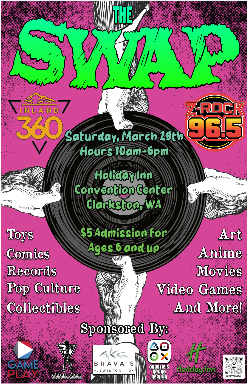The Second Day of Two Nights
Much of America’s audience was deeply moved Aug. 21 under the total solar eclipse, but not everybody.
“It was boring,” said junior Lane Vanhorn of the eclipse.
Vanhorn spoke for a good majority of the LHS student body according to Facebook, Instagram, and Snapchat. Of course, not every person at LHS thought that it wasn’t interesting.
“If anything, I thought it was trippy. Confusing mostly,” commented junior Cody Bloodsworth.
But, from the multiple complaints in his astronomy class, Jeffery Karlin, LHS science teacher, brought light to the subject.
“I think in our day of amazing technology, finding a wow factor for a child is harder than ever,” Karlin said. “Half of the nonsense they watch on YouTube or through their Twitter feeds or whatever, … [is] exaggeration of reality.”
He added that much of social media makes serious events seem funny.
“And then when you see something that is real, not photoshopped, it’s not going to be as
interesting. There is going to be a little bit of a letdown,” Karlin said.
As the subject was thrown into the air, Karlin laid down his view on the eclipse.
“Consider this,” he starts. “Consider if you had a 95 to 96 percent occultation of anything — you don’t see it. Yet, putting that much cover over our star, you could still photosynthesize on Earth.”
“Yes, it may have been a little colder, but the Earth is still gaining energy from the sun. The sun is so powerful that if you cover up 96% of it, there’s still light to read by. That should give you some at least respect of how much energy sits, some 96 million miles away, and without it we don’t exist.”
“And then you start learning the fact that there are those that are 10, 15, , possibly one hundred times the size of our star. You can only theorize as to the immensity or the effect that those huge bodies of matter would have,” he emphasized.
As he proceeded on telling his opinion, he finished with quite an eye-opening perspective of his experience watching the eclipse.
“That’s the respect and I guess that the level of ‘awe’ I was having,” he said. ” (The eclipse) wasn’t meant for ‘wow’ it was meant for ‘oh.’ And I think on that score, it was perfect.”
Karlin’s infatuation with space didn’t start with seeing a shooting star cross the sky.
“It was the Star Wars opening weekend in ‘77 in Spokane, Washington,” he said. “I’ve always had an interest, but certainly from the first time that I saw the Star Destroyer go across the screen, shooting lasers,that is when I knew.”
Denying the fact that he was obsessed with Star Wars, he added, “Every holiday it seemed that there was a new Star Wars toy. Maybe I didn’t want the big monster one, the millennium falcon or the ATAT, but certainly Luke, Han, Leia and their menagerie.”
Uncovered from the depths of Bengal’s Purr archives of retired LHS teacher Ron A. Mikkelson a 1979 story announced “LCSC Instructor Disappointed In Results Of Feb. 26 Eclipse.”
In the eclipse article in the 1979 Purr, the writer reported, “Dr. Ross Floyd, physics, astronomy, and math teacher at Lewis-Clark State College said that he was very disappointed in the results the solar eclipse.”
Going more in depth in the article, Floyd focused on viewers’ retinas getting burnt, rather than the actual eclipse itself.
“During the last eclipse in Washington D.C. and Delaware in 1970 there were 200 people with damaged eyes,” Floyd said to the Purr.
Unlike back in 1979, there is no local record of people whose eyes were damaged from the eclipse.
But, Karlin, knowing that he and many of his students had eclipse glasses, was only concerned Aug. 21 with the beauty of the eclipse.
Even though two different astronomers from two different decades saw two differently timed eclipses, they were both with the same moon and sun — two generations laced together with the burning brightness of a total solar eclipse.





